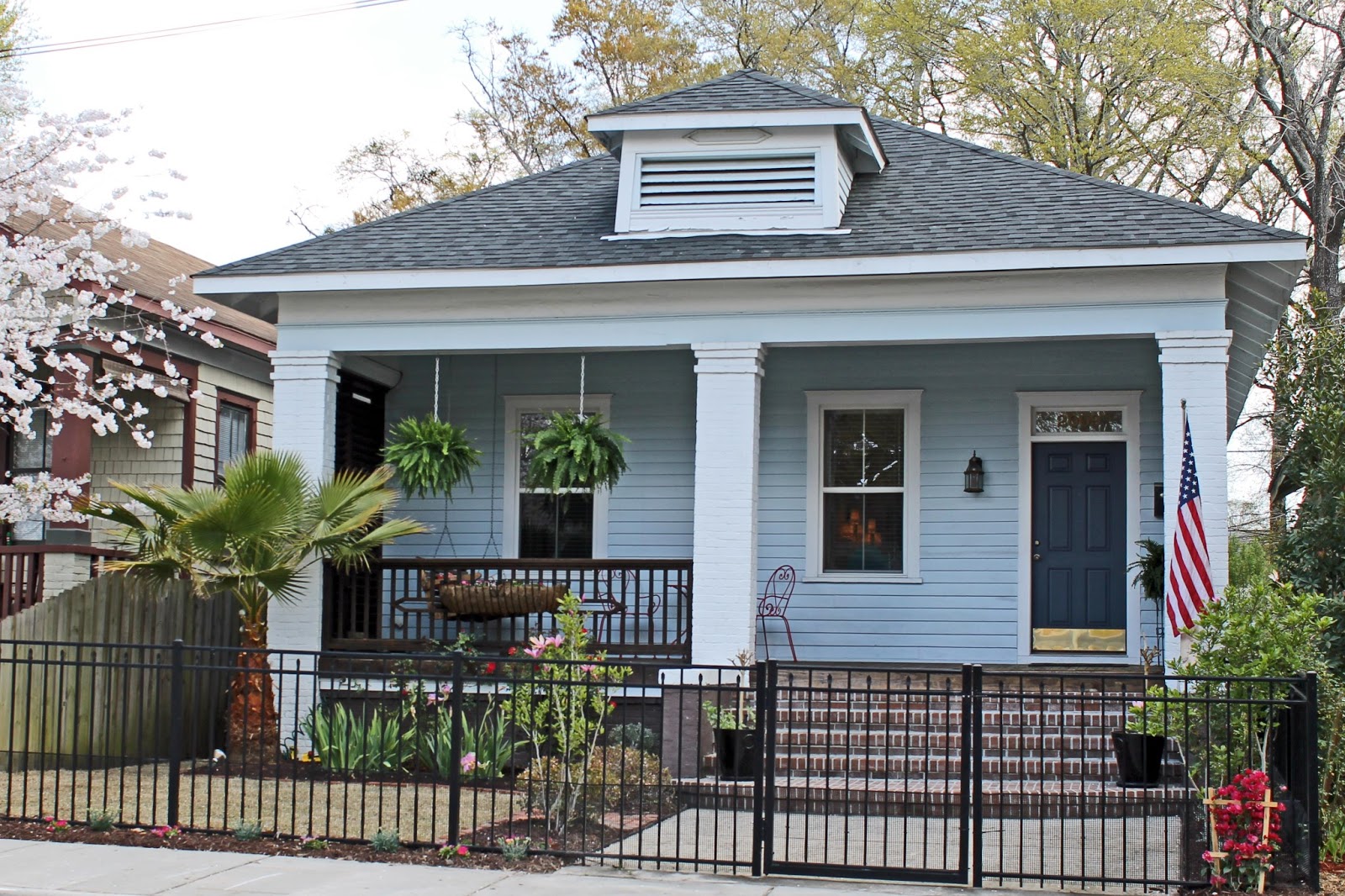

Wilmington shopping isn’t defined by shopping malls or big box retailers. Among the many historic district shopping options the Cotton Exchange. The Wilmington Walk of Fame is located on site honoring local-born individuals who have attained national acclaim.
Adjacent to Carolina Place Historic District this 815-acre district is roughly bounded by Market Street, 13th Street, Rankin Street, and 19th Street. There are more than 410 Classical Revival, Colonial Revival, Prairie style and Queen Anne style residences and businesses built beginning in 1908.
The Carolina Place neighborhood was built as a streetcar suburb at the turn of the 20th century. It includes 460 acres and 337 Bungalow, Craftsman, Queen Anne, and late 19th/early 20th century Revival homes.
The Market Street Mansion District in Wilmington, North Carolina, is added to the National Register of Historic Places. Colonial and Classical Revival architecture from 1900 to 1924 are featured, including four magnificent homes at 1704, 1705, 1710, and 1713 Market Street, which include the Kenan House (pictured) and the Wise Alumni House.
Homes built between 1825 and 1949 in this district on the east side of Magnolia Drive and from 7301 to 7506 Masonboro Sound Road feature architectural styles including Colonial Revival and late 19th/early 20th century Revival. The district is an important survivor of an 18th/19th century resort community, and also the site of salt works during the Civil War.

Sunset Park was envisioned in 1912 as a high-class, planned community with views overlooking the Cape Fear River and picturesque Greenfield Lake. The 800+ homes, businesses, churches, and parks in this district were built primarily in the Bungalow, Craftsman and Colonial Revival architectural styles.

Another neighborhood designed as a streetcar suburb, the 500+ homes, churches, stores and a fire station in this district bounded by Dock Street, Wrightsville Avenue, Queen and Lingo Streets, and by S. 14th Street feature Bungalow, Craftsman and Colonial Revival architecture, built about 1914.

Wilmington boasts one of the largest National Register of Historic Places areas for a city its size in the United States. It consists of several smaller locales, including the Downtown District totaling approximately 100 blocks. Wilmington’s Historic District is under the oversight of the Wilmington Historic Preservation Commission and the Historic Wilmington Foundation that assure compliance with established historical standards.

This park on the corner of North Third Street and Davis Street tells the story and legacy of riots in 1898. The 1898 Memorial provides a new gateway to Wilmington and serves as a symbol of social progress and harmony.
Moored in quiet dignity and majesty the Battleship North Carolina, across the river from downtown Wilmington, beckons visitors to walk her decks. Envision the daily life and fierce combat her crew faced in the Pacific Theatre during World War II.

The Bellamy Mansion is one of North Carolina's most spectacular examples of antebellum architecture, built on the eve of the Civil War. It is now a museum that focuses on history and the design arts and offers tours, changing exhibitions and an informative look at historic preservation in action.

Constructed in 1888, St. Andrews Church was the cultural, spiritual, and social center of Wilmington's Brooklyn neighborhood for nearly a century. Now, elegantly restored and refurbished, it is historic downtown Wilmington's most stunning event venue, and the ideal location for any occasion. Standing at the corner of Campbell and North 4th streets, the Center is two minutes from the Cape Fear Riverwalk and Historical District.
Using the old jail as the foundation, the Burgwin-Wright House was built in 1770 by John Burgwin, planter, merchant, and treasurer of the colony of Carolina. In 1781, "the most considerable house in town" was occupied by Lord Cornwallis as his headquarters shortly before his defeat and surrender at Yorktown, Virginia. In 1799, Joshua Grainger Wright purchased the house for 3500 Spanish milled dollars. In 1937, it was bought by The National Society of The Colonial Dames of America in the state of North Carolina.
A 42,000 square foot cultural gathering place designed in 2002 by the renowned architectural firm of Gwathmey Siegel & Associates (NYC). The museum presents exhibitions and public programs of both historical and contemporary significance, with 6-8 changing exhibitions annually, in addition to outdoor, site-specific projects on its park property.
Cape Fear Museum of History and Science is the oldest history museum in North Carolina. Since its founding in 1898, the Museum has grown and changed. It began collecting confederate relics, and now collects images and artifacts that help us understand the history, science and cultures of the region.
Offers a unique venue for holiday parties, weddings, wedding receptions, anniversaries, birthdays and family reunions. Have an evening of fun or romance on one of the dinner cruises, or take in the sights along the beautiful Cape Fear River in Wilmington on one of the narrated sightseeing cruises, river tours, or adventure excursions.
Until the last few months of the Civil War, Ft. Fisher kept North Carolina's port of Wilmington open to blockade runners supplying necessary goods to Confederate armies inland. When Ft. Fisher fell after a massive Federal amphibious assault on January 15, 1865, its defeat helped seal the fate of the Confederacy.

Join us as we traverse 275-year old alleyways littered with the spiritual debris of privateers and cutthroats. Stroll beneath a canopy of centuries old live oaks, their cryptic limbs dripping with Spanish moss, and hear tales of murder and mayhem. And if you dare, tread upon the unmarked graves of thieves, murderers and other less pitiful souls.
The Historic Wilmington Foundation is a non-profit organization that focuses its efforts towards preserving the architectural heritage of the Lower Cape Fear region. Since its formation in 1966, the Historic Wilmington Foundation has successfully saved over 100 historic properties from demolition. Our mission is to continue promoting historic preservation in the community through educational programs, exhibits, community involvement and revolving fund activities.

The monuments and sculptures contained within enhance Oakdale’s reputation as a place of history and wonder. Ornate inscriptions, stained glass and massive mausoleum contrast with simpler monuments and markers, all of which together relate the story of a city and its people. Finely crafted monuments alternate with the flora that tower high above. Still an active cemetery, Oakdale is truly an outdoor museum and arboretum.
For more than 125 years, railroading was Wilmington's chief industry. In 1840 the Wilmington & Weldon Railroad was the world’s longest continuous rail line. By the turn of the 20th century several railroads up and down the eastern seaboard, including the Wilmington & Weldon, merged to become the Atlantic Coast Line Railroad with headquarters located here in Wilmington. During its heyday the railroad contributed heavily to the area's commercial and industrial growth, but in 1960 the ACL moved its headquarters to Jacksonville, Florida.
Housed in the turn of the century Myers Cottage, the Museum exists to preserve and to share the history of Wrightsville Beach, and to reflect how life was lived in a typical home on the Beach and throughout the community.